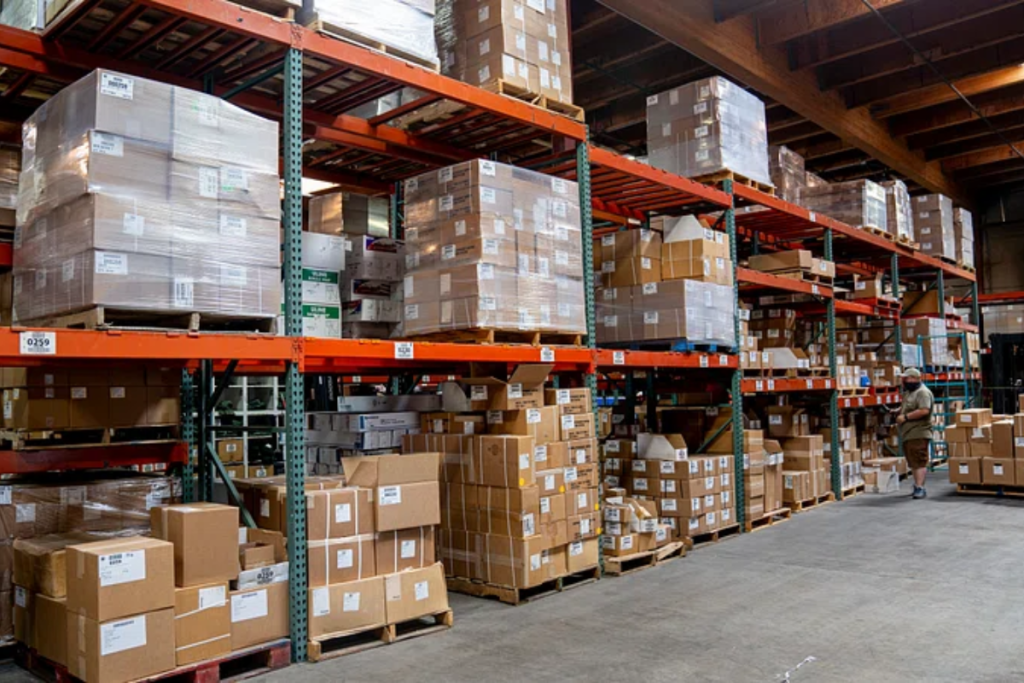As reshoring accelerates across U.S. manufacturing, warehouses are emerging as the weakest and most overlooked link in the supply chain. Most still rely on manual processes, outdated systems, and a shrinking labor pool to support increasingly complex fulfillment demands. Without decisive modernization, these facilities risk turning America’s supply chain revival into an operational bottleneck.
Fulfillment Gaps Undermine Reshoring Plans
Reshoring has become a strategic and political imperative. In boardrooms and briefing rooms alike, the case is clear – reduce dependence on geopolitically volatile regions, secure critical supply lines, and bring industrial capability back within national borders. But beneath the headlines and policy playbooks, a more operational and far less glamorous reality is unfolding.
Warehouses, the connective tissue of modern supply chains, are aging badly. According to DHL, over 80% of U.S. warehouses still operate without any automation. Nearly 70% of inventory control relies on spreadsheets. And more than 60% of firms report limited or no end-to-end visibility. These are not mere efficiency gaps. They’re strategic liabilities.
These aren’t abstract concerns, they represent concrete operational gaps. Without real-time inbound verification, dynamic storage logic, and outbound accuracy, even the most advanced reshoring initiative is standing on sand. And yet, the industry continues to treat these issues as tactical, not structural.
Fixing the Functional Gaps Inside the Warehouse
Warehousing in 2025 isn’t just about storage – it’s about flow, insight, and assurance. And that requires a decisive shift in how we think about technology adoption.
1. Inbound Intelligence
Before a product is ever shelved or shipped, it crosses the loading dock and that’s where the first breakdown often occurs. Mismatched shipments, missing labels, and unconfirmed receipts are not rare anomalies; they are persistent, daily failures in many U.S. warehouses.
That’s where computer vision and OCR (optical character recognition) offer immediate, high-impact gains. These technologies transform static inbound processes into dynamic data capture moments. Labels are scanned, documents digitized, and discrepancies flagged in real time, without manual intervention. The result is a dramatically reduced error rate in goods receipt, tighter alignment between purchase order and physical delivery, and fewer downstream surprises.
2. Dynamic Slotting
Once inventory makes it inside, many warehouses fall back into legacy workflows – static racking systems, manual placement decisions, and tribal knowledge about where things “should” be. This isn’t just inefficient, it’s opaque and error-prone.
Dynamic slotting flips this paradigm by using algorithms and historical data to continuously optimize product placement based on real-time activity: order frequency, item velocity, product affinity, and pick paths. High-volume SKUs are moved closer to pick zones, slow movers are relocated, and the entire layout evolves with demand.
3. Task Orchestration
Labor shortages remain one of the biggest bottlenecks in warehouse operations, especially as reshoring drives demand for more domestic throughput. But while full automation is capital intensive and slow to scale, AI-driven task orchestration platforms offer an immediate path to productivity.
These systems dynamically assign tasks – picking, packing, replenishment – based on real-time priorities, location of staff, and operational bottlenecks. Think of it as an intelligent dispatcher, constantly reallocating warehouse labor to where it’s needed most.
4. Exception Management
Modern warehouses can no longer afford to treat disruptions as after-the-fact incidents. Exception management platforms change that by identifying anomalies – damaged goods, inventory mismatches, missed SLAs – in real time, and recommending immediate corrective actions.
These platforms leverage AI and workflow automation to trigger alerts when KPIs fall out of range, suggest re-routing, order splitting, or escalation paths, and prevent downstream impact through proactive resolution.
5. Outbound Verification
In many warehouses, shipments are still loaded with only basic cross-checks. Mismatched orders, incorrect quantities, or misrouted pallets can easily slip through. The consequences? Chargebacks, service failures, and damage to customer trust.
AI-powered outbound verification systems use image recognition, weight sensing, and rule-based logic to automatically validate shipments before they leave the dock. They ensure what’s loaded matches the picklist and customer order, down to item-level accuracy. Mistakes are caught before the trailer door shuts, not after the customer calls.
With more reshoring strategies tied to direct-to-consumer fulfillment, build-to-order models, and agile replenishment, flawless outbound execution is no longer negotiable. It is the last impression a warehouse makes, and often the one customers remember.
A Measured Reset for Warehouse Operations
Reshoring is reshaping strategic supply chain agendas, but its success will depend on executional depth, not just directional intent. Warehouses, long treated as cost centers or compliance checkpoints, now occupy a far more central role in determining operational continuity, fulfillment accuracy, and supply chain responsiveness.
What’s required is not a reinvention, but a reset, one that prioritizes systemic visibility, minimizes manual dependencies, and aligns warehouse performance with broader production and sourcing objectives. The technologies outlined are not transformative because they are new, but because they address familiar weaknesses with uncommon precision.



